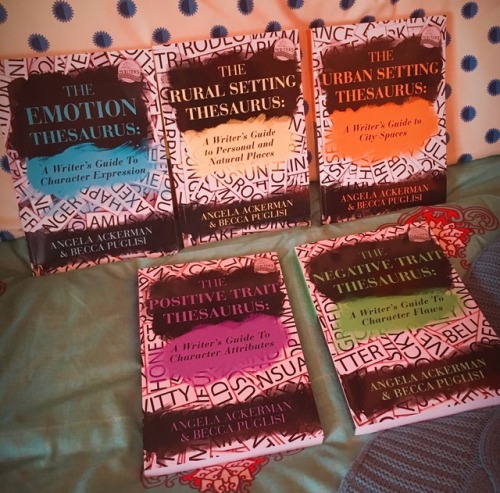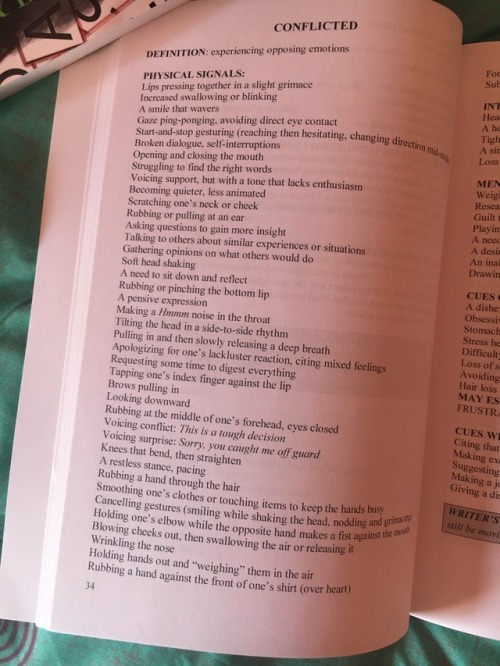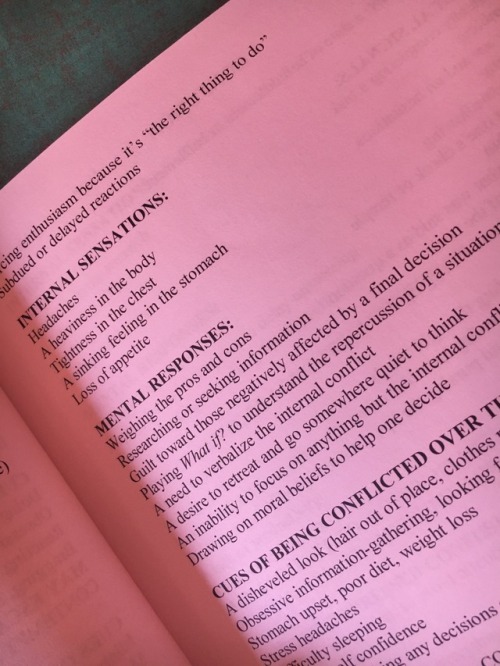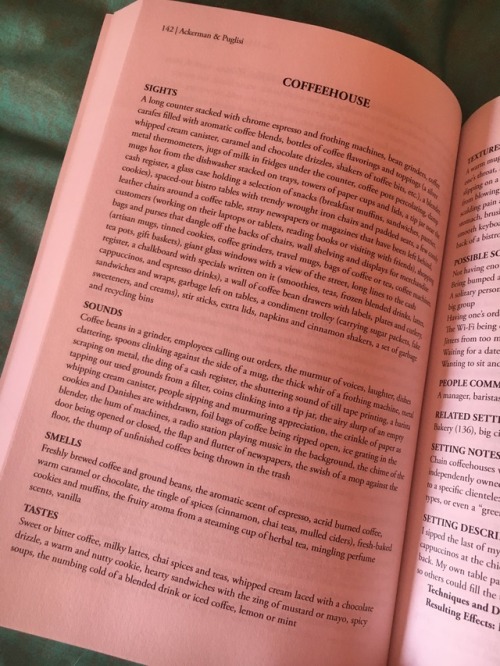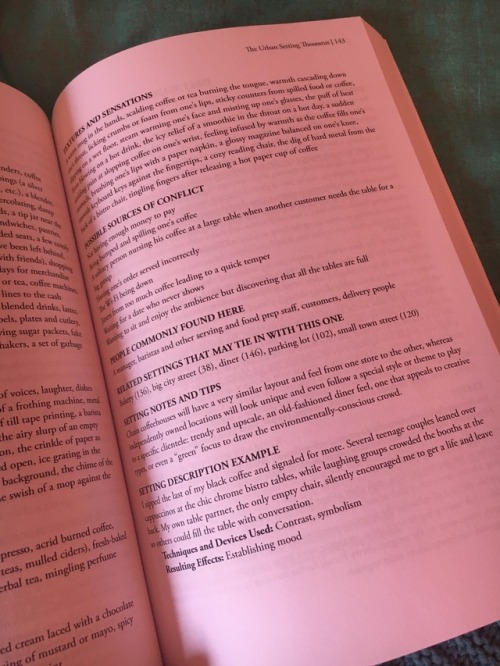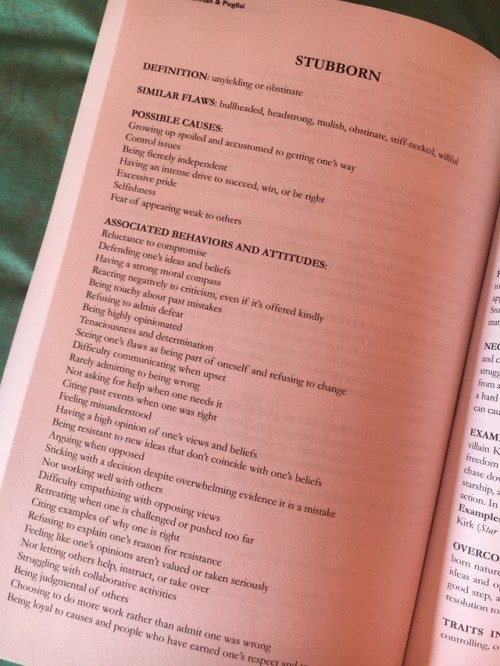drabblemeister: OKAYI have been meaning to do this for MONTHS but hey, there’s no better time
drabblemeister:OKAYI have been meaning to do this for MONTHS but hey, there’s no better time than the present so buckle up, here we go!THESE BOOKS ARE A GODSEND.I am ALWAYS on the lookout for writing aids that ACTUALLY HELP. If you’re like me, and occasionally venture out to buy books on, let’s say, showing vs telling - you will always get the same rehearsed speeches on what that means. -summons pretentious writer’s voice- You’ve got to shoooooow what’s happening in the scene, not teeeeeeell~~ BAH! What you NEVER get, however, is how to do it, or how do it better.THESE BOOKS ARE THE STUFF OF DREAMSEach of these is so freaking helpful, I can’t even convey. They all follow the same format as the pictures I’ve shown above, so you get one detailed page of descriptions followed by tons of more in-depth, thought provoking concepts.I’ll do my best to lay out the five that I have and if you are interested, hop on over to Amazon and buy these suckers up because they are AMAZING; I have NEVER used a writing resource more than I use these.Negative Trait Thesaurus & Positive Trait Thesaurus -gives you a definition of said negative trait-gives you similar flaws also found in the book-gives you possible causes of WHY the character might have this trait-gives you a list of other behaviors the chara might have-gives you examples of the chara’s thought process-gives associated emotions-gives positive aspects of the trait, as well as negative-gives examples of well known chara’s that have this trait-talks about how the chara might overcome it-gives traits that, when combined with this one, might cause conflictHow I use this information:Chara building, or when I get stuck on what I want a character to do. Man, I just can’t decide what they WOULD do. Well, awesome, I have a little guide to help me think through the character’s possible motivations. Also, I get help building a potential backstory because I get a framework of which to think, why is the character this way?Urban Setting Thesaurus & Rural Setting Thesaurus-gives a whole lot of examples of sights, smells, tastes, and sounds-gives examples of textures and sensations (ie at an ‘antique shop’ you may encounter chipped paint, distressed wood, etc)-gives you possible sources of conflict (ie at a ‘hotel’ you might have noisy neighbors)-gives list of people you might expect to find at said location-gives related settings-gives tips on this type of setting-gives a setting description exampleHow I use this information: IMAGERY IMAGERY IMAGERYEmotion Thesaurus (aka MY FAVORITE)-gives a definition of the emotion-gives physical signs and signals (ie chara may look pale, might fidget, etc)-gives internal sensations (aka, blood pounding in the ears, dry throat, adrenaline rush)-gives mental responses (ie fight or flight)-gives cues of acute or long-term impacts of the emotion-gives ‘may escalate to _______’ and directs you to other emotions-gives cues of suppression (ie cues of suppressed rage)-gives writer tipsHow I use this information: I love this book so hardcore, it’s so helpful with internalizing. It’s great because I get to step outside of that box of using the same five responses to a certain emotion and start really thinking about, what can a character do instead to show that they are feeling this, rather than me using adverbs or his adrenaline pumped fifty gazillion times.These books are all co-written by Angela Ackerman and Becca Puglisi (bless their souls) and if this sounds of interest LOOK INTO IT!! I get such buyer’s regret after buying writing guides but these are legit the best ones I have found and I reference them so, so, so much.Hope this helps anyone out there looking for something life-changing!! -- source link
Tumblr Blog : drabblemeister.tumblr.com
#awesome#references
